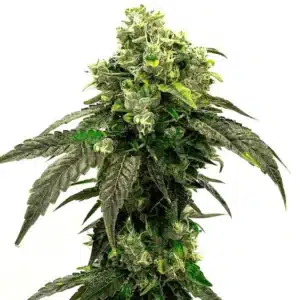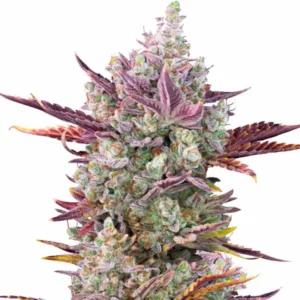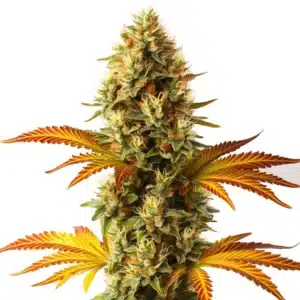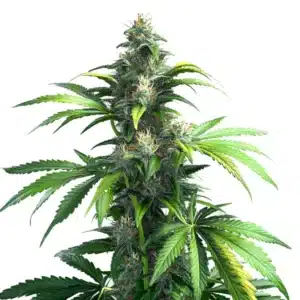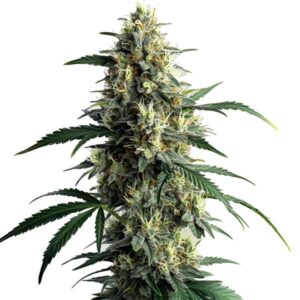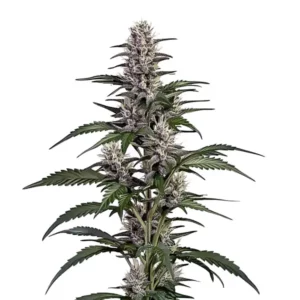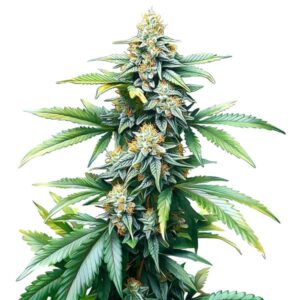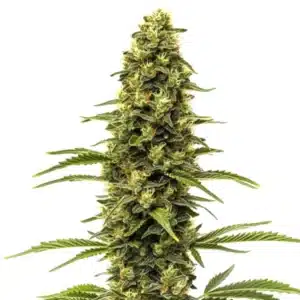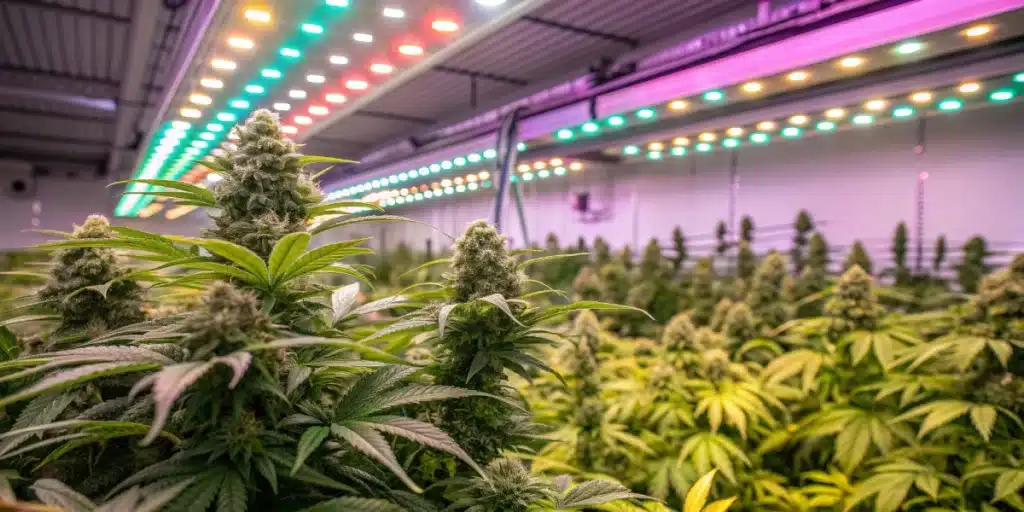
How to Grow Hindu Kush Weed Strain
Hindu Kush Weed Strain Description
Hindu Kush Seeds are a classic cannabis variety known for its balanced nature and robust performance. This strain offers medium THC levels ranging from 15% to 19% and very low CBD content (around 0.02). Hindu Kush Weed Strain, with genetics that consist of 80% Indica and 20% Sativa, it leans heavily toward the Indica side. This gives it a mostly calming effect, yet the strain still provides a happy experience with a good dose of energy. Its overall character is perfect for those who need help with depression, insomnia, and muscle spasms.
What strain is Hindu Kush? Hindu Kush is a classic, pure indica landrace cannabis strain that comes from the rugged Hindu Kush mountain range, stretching across Afghanistan and Pakistan. This legendary strain is celebrated for its deeply calming effects, rich earthy scent, and notably high THC content.
Recommended Strains
Hindu Kush
|
|
THC | 15% - 19% (Medium) |
|
|
Type | Feminized |
|
|
Yield | High |
|
|
Phenotype | 45% Indica / 55% Sativa |
Afghan Kush
|
|
THC | 16% - 21% (Medium) |
|
|
Type | Feminized |
|
|
Yield | Medium |
|
|
Phenotype | 90% Indica / 10% Sativa |
The buds of Hindu Kush are medium in size and yield a respectable harvest. Indoor yields range between 1.47 to 1.82 oz per square foot (450 – 550 grams per square meter), and outdoor plants can reach up to 21 oz per plant (600 grams per plant). The plant typically grows to a height of about 4.92 ft (1.5 m). Its growth pattern and flowering time make it a good option for beginners who want a reliable strain.
Hindu Kush expresses a rich terpene profile that influences both its aroma and its therapeutic properties. The presence of Caryophyllene and Linalool contributes to its ability to ease depressive symptoms by triggering mood-enhancing effects. At the same time, the combination of Myrcene, Terpineol, and high levels of Linalool can produce a soothing, sleepy state that many users find beneficial for stress relief and insomnia. For pain relief, terpenes such as Myrcene and Humulene are key; when combined with Eucalyptol, they work together to reduce chronic pain through earthy, musky, woody, and spicy aromas. Flavors of Hindu Kush include hints of berry, citrus, earthy tones, lemon, and a touch of sweetness. Its effects are energetic, euphoric, and uplifting, making it a versatile strain suitable for both recreational enjoyment and medicinal applications.
This well-rounded strain remains popular among growers due to its forgiving nature and consistent performance. It offers a straightforward growing experience while providing substantial benefits in both flavor and effects. Whether you are aiming for a relaxing evening or need help with specific health issues, Hindu Kush Weed Strain delivers a balanced outcome that caters to a broad range of needs. For those seeking detailed cultivation insights, a comprehensive Hindu Kush grow report can offer valuable guidance on maximizing yields and optimizing conditions throughout the growth cycle.
Promos & Deals
Environmental Requirements for Growing Hindu Kush Weed Strain
Hindu Kush Weed Strain thrives when grown in a stable and well-regulated environment. Indoor growers should keep temperatures between 70°F and 80°F (21°C-27°C) during the day and allow for slightly cooler nights. This temperature range supports steady growth and encourages the development of dense, resinous buds. Humidity plays a vital role, especially during the different stages of growth. In the vegetative phase, maintaining humidity around 60% to 70% ensures that the plant stays healthy and vigorous. As the strain moves into the flowering phase, reducing humidity to 40%-50% helps prevent mold and mildew, while also boosting resin production.
Lighting is one of the most important factors in any indoor grow. High-quality LED or HPS lights work best for Hindu Kush, as they provide a full spectrum of light that promotes active photosynthesis. During the vegetative stage, offering 18-20 hours of light per day supports rapid growth. When the plant enters the flowering stage, switching to a 12/12 light cycle directs the plant’s energy towards bud production. This controlled light schedule plays a key role in producing the potent and aromatic buds that define Hindu Kush.
For outdoor cultivation, choose a site that offers abundant sunlight and natural warmth. The soil should be well-draining and rich in nutrients, as this will encourage strong root growth and overall plant health. Many growers amend the soil with organic compost or worm castings to boost fertility. Outdoor growers must also consider wind protection; simple windbreaks or planting near natural barriers can shield the plants from harsh gusts, which might otherwise stress the plant or damage the buds. Consistent airflow is beneficial not only to prevent pest infestations but also to ensure that temperature and humidity remain at optimal levels. Regular monitoring and quick adjustments in the growing environment are essential for keeping Hindu Kush healthy and productive throughout its growth cycle.
Setting Up The Growing Cannabis Space
Indoor Cannabis Cultivation
Setting up an indoor grow space for Hindu Kush Weed Strain involves choosing a dedicated area such as a grow tent or a small room. Start by lining the walls with reflective materials like Mylar to distribute light evenly. Installing oscillating fans and an exhaust system with a carbon filter is crucial for controlling heat and odor. These active measures keep the environment stable and prevent issues like mold or heat stress.
When starting your plants, use high-quality soil with a pH level maintained between 6.0 and 6.5. Begin with small containers or seedling trays and then transplant to larger pots once the roots have established. This step-by-step approach gives Hindu Kush the space it needs to grow a robust root system. For those who are new to growing cannabis, this strain’s forgiving nature combined with its moderate yield makes it a great choice to build confidence and gain experience.
In addition to basic setup, maintain a regular schedule for monitoring temperature, humidity, and light. Automating these tasks with timers and sensors can further simplify the process. Every adjustment you make actively contributes to creating a balanced indoor environment that maximizes the growth potential of Hindu Kush Weed Strain.
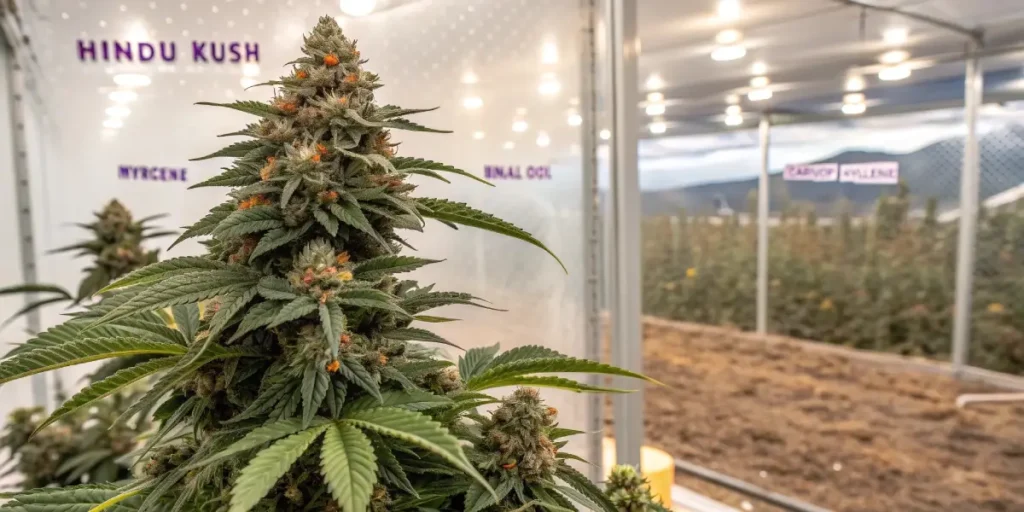
Outdoor Cannabis Cultivation
Outdoor cultivation of Hindu Kush requires a well-planned setup. First, select a location that offers full sun exposure and fertile, well-draining soil. Preparing the soil with compost or organic matter is essential, as it enhances fertility and encourages vigorous growth. Raised beds or large containers can also improve drainage and allow for better control over water distribution.
Wind protection is important when growing outdoors. Erecting simple windbreaks or choosing a naturally sheltered area can prevent the plant from experiencing undue stress during strong gusts. Regularly monitor the weather and water the plants consistently to avoid fluctuations that may stress the strain. Outdoor growers benefit from nature’s full spectrum of sunlight, which supports photosynthesis and leads to impressive yields.
Active outdoor management includes regular weeding, checking soil moisture, and using organic pest control measures when needed. These steps ensure that Hindu Kush remains healthy and produces medium yields of dense buds. The simplicity of outdoor growing, combined with the strain’s resilience, makes it an excellent choice for growers at any level.
Propagation and Germination of Hindu Kush Weed Strain
Starting with high-quality feminized seeds is the first step in a successful cultivation process for Hindu Kush Weed Strain. Trusted seed banks provide the best genetics for consistent performance. To initiate germination, soak the seeds in distilled water or place them on a damp paper towel for 24-48 hours. This process softens the seed coat and triggers the emergence of a small taproot, setting the stage for active growth.
Once the taproot appears, plant the seed in a small container filled with a light, well-draining soil mix. Maintain an ambient temperature of 75°F to 80°F (24°C-27°C) and keep humidity levels between 60% and 70% until the seedlings display their first true leaves. As the young plants grow, gradually increase light intensity to help them adjust without stress. Every step in this early phase is crucial, as careful seed propagation leads to strong seedlings that will later produce a robust yield.
Consistent care during the propagation stage lays a solid foundation for the entire life cycle of Hindu Kush. Monitoring water levels, temperature, and light ensures that the seedlings develop evenly and are ready to transition to the vegetative phase. This active approach to germination helps build healthy plants that will thrive through the subsequent stages of growth.
Vegetative Phase of Hindu Kush Weed Strain
During the vegetative phase, Hindu Kush Weed Strain experiences rapid growth. In this stage, the plant focuses on developing a strong structure, including lush green leaves and sturdy stems. Provide 18-20 hours of light per day to maximize photosynthesis and encourage active growth. Using a nitrogen-rich fertilizer supports vigorous foliage development and helps build a healthy framework for the plant.
Active training methods such as low-stress training (LST) or topping are recommended during this phase. These techniques help the plant form an even canopy, allowing light to reach all areas and promoting air circulation. Regular pruning of lower leaves and branches also contributes to a more efficient growth pattern by reducing the risk of mold and pest issues. Monitoring the environment especially temperature, humidity, and water levels ensures that the plant does not experience stress that could hinder its development.
This phase is critical for building the foundation that will support a successful flowering stage. Consistent, active care during the vegetative period not only increases the yield but also improves the overall quality of the final buds. By focusing on simple, effective techniques, you can help Hindu Kush grow into a robust plant that delivers a rewarding harvest.
Flowering Phase of Hindu Kush Weed Strain
The flowering phase is when Hindu Kush Weed Strain truly comes into its own. Change the light schedule to 12 hours on and 12 hours off to initiate flowering. During this period, the plant diverts energy from growth to the production of dense, resinous buds. Use fertilizers that are high in phosphorus and potassium to support active bud formation and enhance resin production.
Keep the growing area cooler, ideally between 65°F and 75°F (18°C-24°C), and reduce humidity to 40%-50% to prevent mold and mildew. The controlled environment ensures that the buds develop fully while preserving their aromatic qualities. It is common to provide support with stakes or trellises, as heavy buds may cause branches to bend or break. Frequent checks of the trichomes under a magnifier help determine the optimal harvest time when most trichomes appear milky with a few amber hints, it is time to harvest.
Active management during the flowering phase is key. By following a strict light schedule, adjusting nutrient levels, and monitoring environmental conditions, you can achieve a high-quality yield. The final product boasts a complex mix of flavors and therapeutic effects that make Hindu Kush a favorite among many users.
Cannabis Fertilization and Nutrition
Proper nutrition is essential for growing a healthy crop of Hindu Kush Weed Strain. During the vegetative phase, a nitrogen-rich fertilizer helps to build a robust canopy. As the plant enters the flowering phase, switch to a blend high in phosphorus and potassium to promote strong bud development. Maintaining the pH between 6.0 and 6.5 ensures that nutrients are absorbed effectively by the roots.
Many growers supplement their feeding routines with organic matter like compost or worm castings, which naturally enhance soil fertility and improve the overall flavor profile of the buds. Regularly monitor water levels and adjust nutrient dosages based on the plant’s growth and overall health. Active management of feeding routines, including timely adjustments based on environmental conditions, helps prevent nutrient burn or deficiencies that can hinder growth.
This systematic approach to nutrition not only supports vigorous growth but also contributes to a higher yield of dense, resin-rich buds. Every small adjustment in the feeding regimen actively contributes to the long-term health and potency of Hindu Kush Weed Strain.

Pest and Disease Control for Cannabis Growing
Even robust strains like Hindu Kush can fall prey to pests and diseases if not managed properly. It is essential to keep your grow area clean and inspect your plants daily for any signs of spider mites, aphids, or thrips. When an infestation is detected, act quickly by using organic treatments such as neem oil to minimize damage. Good airflow and regular removal of dead leaves reduce the risk of fungal infections and mold.
Consistent cleaning and immediate action in response to any pest or disease signs are crucial. By maintaining a tidy environment and monitoring conditions regularly, you actively prevent major issues before they develop. This proactive approach protects your Hindu Kush crop and ensures that the plants remain healthy and productive throughout their lifecycle.
Integrate simple, natural pest control methods and always be ready to adjust your strategy based on real-time observations. Active management here goes a long way toward guaranteeing a smooth, uninterrupted growing process.
Harvesting and Curing for Cannabis Growing
Harvesting Hindu Kush Weed Strain at the right moment is essential to capture its full potency and flavor. When most trichomes on the buds turn milky with some amber, use clean, sharp tools to cut the branches carefully. Dry the harvested buds in a dark, well-ventilated space with temperatures between 60°F and 70°F (15°C-21°C) and ensure there is ample airflow between the branches.
After drying, cure the buds in airtight glass jars. Open the jars daily during the first week to allow excess moisture to escape, and then let the buds cure for 2 to 4 weeks. This curing process enhances the flavor, aroma, and potency of Hindu Kush by allowing the cannabinoids and terpenes to develop fully. Active care during harvesting and curing plays a significant role in preserving the strain’s unique profile, ensuring that you receive a product that is both potent and aromatic.
Is Hindu Kush Weed Strain Indica or Sativa?
Hindu Kush Weed Strain is mostly Indica, with a genetic makeup of approximately 80% Indica and 20% Sativa. This composition gives it a predominantly calming effect while still offering enough uplift for a happy, energetic experience. The mostly Indica nature provides a soothing body high, which is particularly beneficial for reducing symptoms of depression, insomnia, and muscle spasms. At the same time, the slight Sativa presence keeps the mind clear and promotes an overall uplifting mood. This balanced combination makes Hindu Kush a versatile strain, suitable for both relaxation and daytime use.
Advantages and Disadvantages of Growing Hindu Kush Weed Strain
Advantages: Hindu Kush is well-suited for beginners due to its forgiving nature. It offers a medium THC level (15%-19%) that provides a balanced high energetic and euphoric yet calming. The strain produces a medium yield, with consistent performance both indoors and outdoors. Its rich terpene profile, featuring Caryophyllene, Linalool, Myrcene, Terpineol, and Humulene, contributes to its pleasant berry, citrus, earthy, lemon, and sweet flavors. These properties also support therapeutic uses for depression, insomnia, and pain relief. Overall, its robust genetics and moderate growth requirements make it a reliable choice for cultivators.
Disadvantages: Hindu Kush requires careful monitoring of environmental conditions and nutrient levels to avoid issues like mold, nutrient burn, or branch breakage. Its moderate yield might not satisfy growers looking for exceptionally high production, and extra support may be necessary during flowering due to the weight of the buds. However, with active management and attention to detail, these challenges can be overcome.
Why Buy Hindu Kush Weed Strain
Choose Hindu Kush Weed Strain if you seek a reliable, beginner-friendly strain that offers a balanced and therapeutic high. Its moderate THC levels, consistent yields, and rich flavor profile make it suitable for both recreational and medicinal use. Trusted suppliers, such as those listed on Blimburnseeds.com, provide high-quality feminized seeds that guarantee excellent genetics. Whether you want relief from insomnia, depression, or muscle spasms, or simply wish to enjoy an energetic yet calming experience, Hindu Kush meets those needs with simplicity and efficiency.
The strain’s proven track record and manageable growth requirements make it a great addition to any cannabis garden. Its robust performance and well-rounded effects ensure that growers get a rewarding experience from planting to harvest.
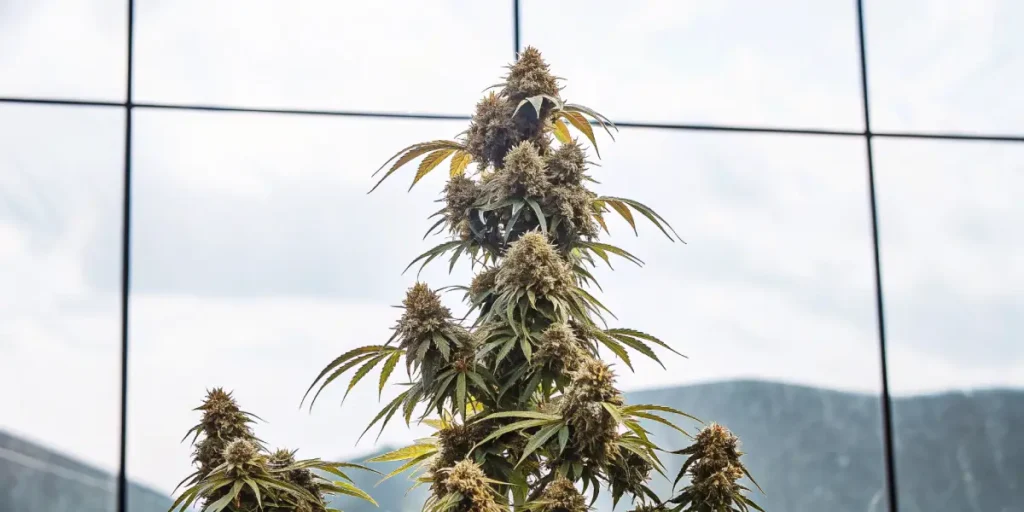
Similar Strains
Afghan Kush
Afghan Kush is another classic strain known for its robust Indica effects. It shares similar growth patterns and yields with Hindu Kush, making it a popular alternative for those who appreciate a strong body high and a soothing, earthy flavor profile.
Northern Lights
Northern Lights is famed for its ease of growth and resilience. Its effects are deeply relaxing, and it offers a slightly sweet flavor. This strain is a good choice for cultivators looking for a dependable, beginner-friendly option with a calming impact similar to Hindu Kush.
Skunk #1
Skunk #1 combines a pungent aroma with robust effects. It produces consistent yields and thrives under similar environmental conditions. The strain appeals to those who enjoy a mix of energetic and relaxing effects, making it comparable to Hindu Kush in terms of overall performance and ease of cultivation.
Tips for Professionals
For growers with more experience, fine-tuning the growing conditions for Hindu Kush can lead to exceptional results. Use timers and quality sensors to keep track of light, temperature, and humidity. Regularly log your nutrient adjustments and environmental readings to detect trends and make quick improvements. Incorporate organic supplements to boost soil fertility, and use training techniques like LST and topping to optimize light exposure and airflow. Active management through detailed record keeping and timely adjustments will ensure that your plants perform consistently. Professionals often experiment with subtle changes in nutrient schedules to maximize yield and potency. Combining modern technology with hands-on care is the key to producing premium Hindu Kush crops.
FAQs
What makes Hindu Kush Weed Strain special?
Hindu Kush stands out because it offers medium THC levels with a balanced, mostly Indica effect that eases depression, insomnia, and muscle spasms. Its rich terpene profile delivers a unique mix of berry, citrus, earthy, and sweet flavors.
How long does it take to flower?
The flowering stage typically lasts 8 to 10 weeks, which is ideal for both indoor and outdoor growing. This timeframe allows the buds to mature fully and develop a high resin content.
Can beginners grow this strain?
Yes, Hindu Kush is recommended for beginners. Its forgiving nature, manageable yield, and consistent performance make it a great option for those new to cannabis cultivation.


